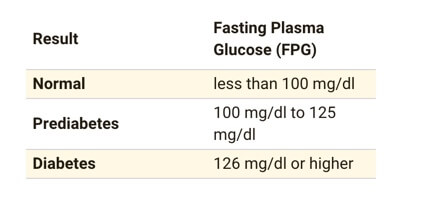The Warning Signs of a Stroke
January 4, 2016Blood Clots After Orthopedic Surgery
March 6, 2016[st_row gradient_color=”0% #FFFFFF,100% #000000″ gradient_direction=”vertical” img_repeat=”full” 1=”video_url_mp4″ autoplay=”yes” child_of=”none” div_padding_top=”10″ div_padding_bottom=”10″ div_padding_right=”10″ div_padding_left=”10″ id_wrapper=”elm_5aa2520fee68f” ][st_column span=”span12″ id_wrapper=”elm_5aa2520fee649″ ][/st_column][/st_row]
A common health problem that often flies under the radar is prediabetes. This health issue can be the start of a cascade of health problems that left undiagnosed, can lead to the more serious problem of Type II diabetes.

To understand prediabetes, you must understand a little bit about how the body works. You must especially understand how the pancreas controls your blood sugar levels.
For us to live, we all must be able to control the sugar levels within our blood. Blood sugars are increased within our blood as we eat (especially by eating carohydrates) and are reduced as our cells utilize the sugars for energy. However, a special hormone that is produced by the pancreas, called Insulin, is the major factor that helps us to control the amount of sugar that we have in our blood. Like a thermostat controls the temperature in your home, Insulin controls the sugar in your blood.
According to the American Diabetes Association, this chart shows the requirements for normal, prediabetes and full blown Type II diabetes.
The Problems With Increased Blood Sugar Levels
So, why should we be concerned about elevated blood sugar levels?
The amount of blood sugar that flows through your blood can create dramatic changes within your body. These changes can affect many systems within your body including, but not limited to, your vascular system, the neurological system, the endocrine system, and virtually every other system in your body. The health effects are far reaching.

Unfortunately, there are not significant symptoms of prediabetes, so blood testing is the best choice. This is why it is so important to regularly see your health care provider.
If not recognized or not treated, your prediabetes can turn into Type II diabetes, which can cause significant health problems. This is why the recognition of early onset of elevation of your blood sugar levels is so important.
The Good News: It’s Reversible
Here is the good news, prediabetes is reversible. Typically, the best way to reverse your prediabetes is through proper diet and exercise, however, you should work with your health care provider to decide on the best treatment route for you.
The Risk Factors For Prediabetes
Here are the risk factors for prediabetes:
- Being overweight
- Being 45 years or older
- Having a parent or sibling with type 2 diabetes
- Being physically active less than 3 times a week
- Ever having gestational diabetes (diabetes during pregnancy) or giving birth to a baby that weighed more than 9 pounds
Race and ethnicity are also a factor: African Americans, Hispanic/Latino Americans, American Indians, Pacific Islanders, and some Asian Americans are at higher risk.
Prediabetes is a serious, but reversible, health issue. One of three Americans (86 million) have prediabetes. Certainly the best way to deal with prediabetes or diabetes is to prevent it from ever occurring. However, once acquired, prediabetes is reversible and you should immediately work with your own health provider.

